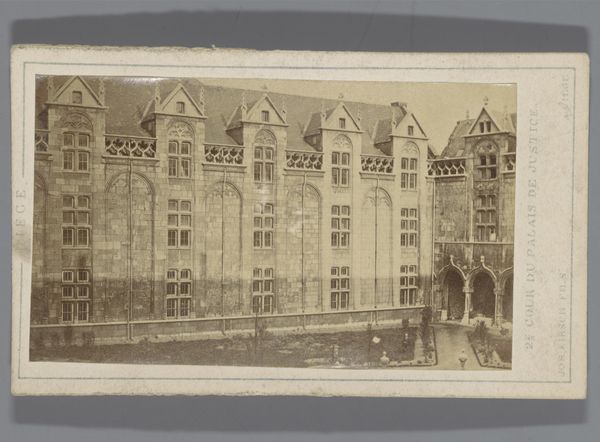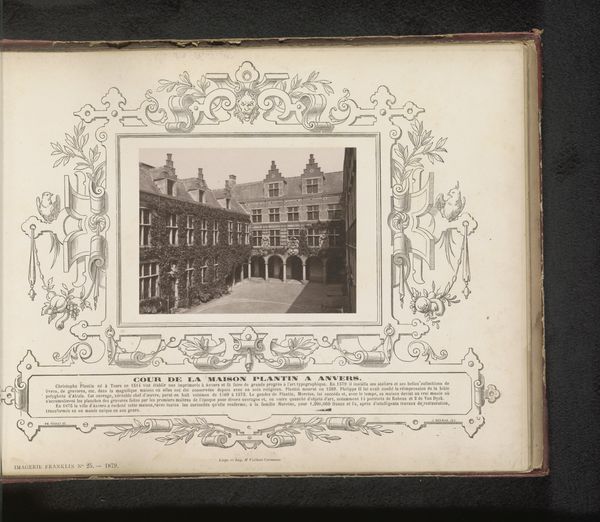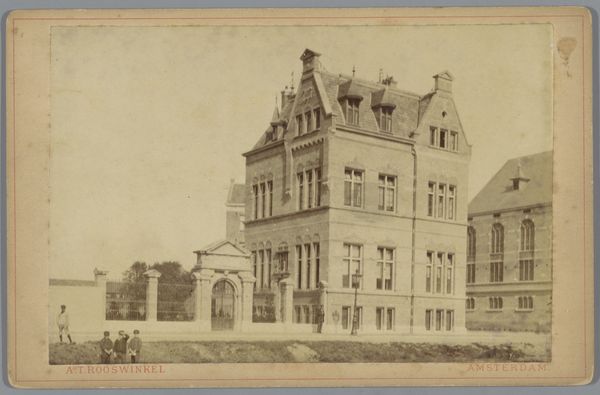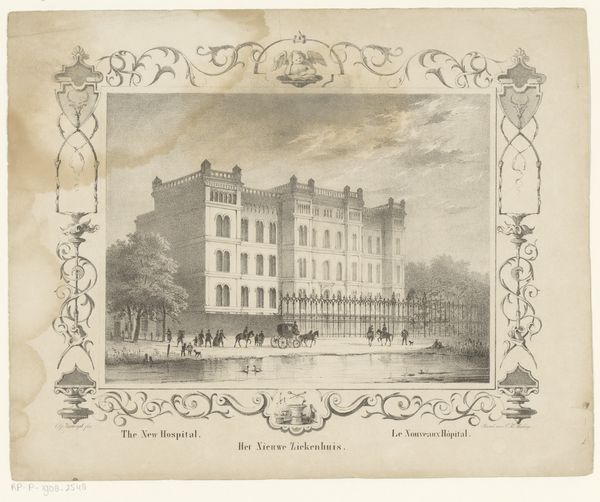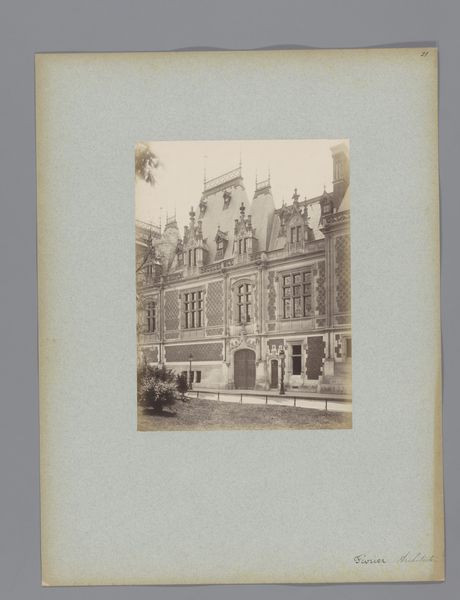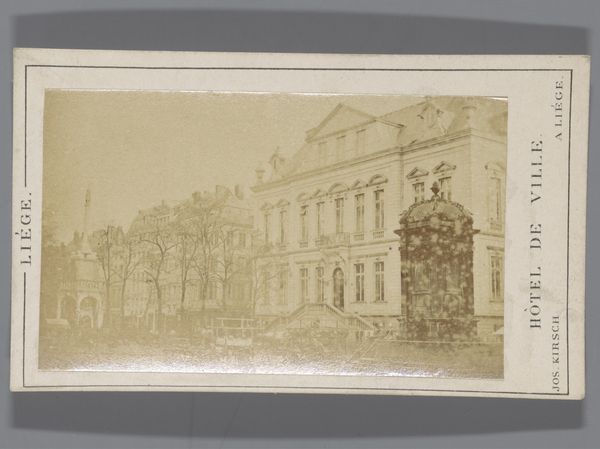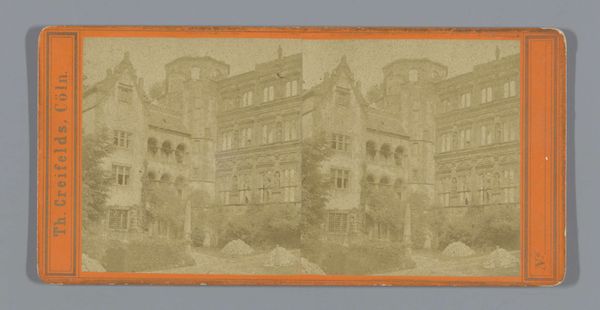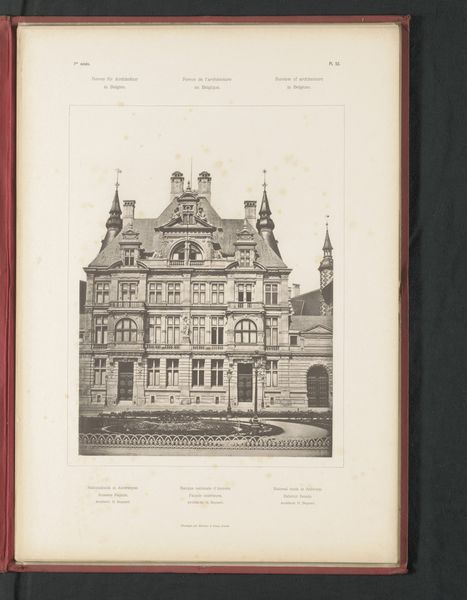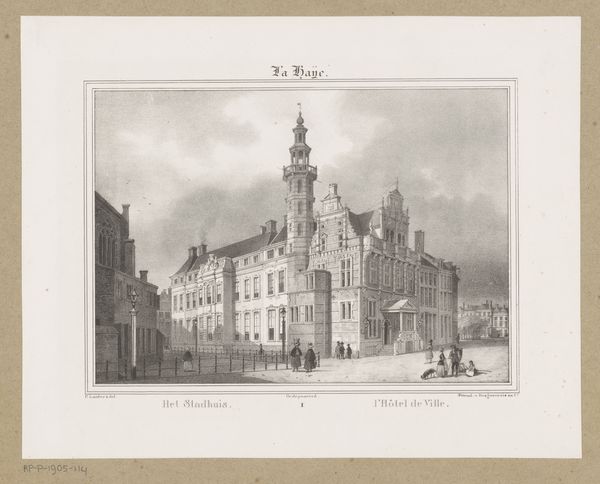
Dimensions: height 62 mm, width 102 mm
Copyright: Rijks Museum: Open Domain
Editor: This is a gelatin-silver print of the Provinciepaleis in Liège, taken sometime between 1862 and 1894 by Joseph Kirsch. The building dominates the frame, almost like a stage backdrop, and it projects this sense of enduring authority. How would you interpret its significance? Curator: It's fascinating how photography, even in its early stages, attempts to capture not just the building, but its essence. Look at the repetition of windows, the arches… it echoes a kind of civic grandeur. The image itself becomes a symbol of the city's identity, almost mythologizing governance through architecture. What historical echoes do you pick up on? Editor: Well, I notice some figures in the foreground, adding a human scale, while the architecture seems to almost dwarf them… almost trying to emphasize how imposing power structures are. It has a sort of realism… a slice of life but highly ordered. Curator: Precisely. These touches serve to remind us that this image wasn't just a recording of a building, but an attempt to capture something about the social fabric itself. Early photographs often became vessels for ideals and aspirations, building collective memories and solidifying identity. What do you think that says about the relationship between a society and its architecture, as viewed through photography? Editor: That's interesting. I suppose the photograph becomes a sort of shorthand, where the building no longer just represents governance but evokes the whole cultural narrative around it. The image and the actual place begin to merge in people's understanding. Curator: Exactly! We often forget that images *shape* how we remember. So the photograph then transcends mere documentation, and actively builds meaning. Food for thought! Editor: This has certainly given me a new perspective on the relationship between image, architecture, and memory. Thank you.
Comments
No comments
Be the first to comment and join the conversation on the ultimate creative platform.
